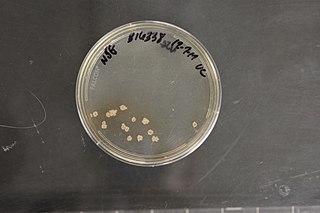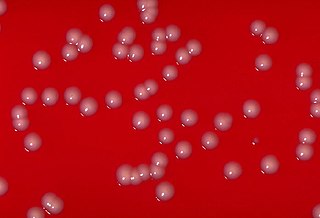
The Actinomycetia are a class of bacteria.

The Acidimicrobiaceae are a family of Actinomycetota.

The Bifidobacteriaceae are the only family of bacteria in the order Bifidobacteriales. According to the 16S rRNA-based LTP release 106 published by 'The All-Species Living Tree' Project, the order Bifidobacteriales is a clade nested within the suborder Micrococcineae, also the genus Bifidobacterium is paraphyletic to the other genera within the family, i.e. the other genera are nested within Bifidobacterium.
The Coriobacteriales are an order of Actinomycetota.

The Glycomycetaceae are a family of bacteria.
The Kineosporiaceae is a family of Gram positive bacteria.
Promicromonosporaceae is an Actinomycete family.
Dermabacteraceae is an Actinomycetota family.
Winkia neuii is a species of Gram-positive, rod-shaped bacteria within the genus Winkia. It is known to live commensally on and within humans as part of normal, healthy microbiota of the human vagina
The Dermacoccaceae is a family of bacteria placed within the order of Micrococcales. Bacteria af this familia are Gram-positive, non-spore-forming and non-motile. Dermacoccaceae bacteria occur on the skin.
Ornithinimicrobium is a Gram-positive, non-spore-forming and non-motile bacterial genus from the family Ornithinimicrobiaceae. The genus was formerly in the family Intrasporangiaceae, but later genomic data caused it to be reclassified in 2018.
Intrasporangium is a genus of Gram positive, nonmotile bacteria. The genus name refers to the mycelium of the type strain forming intercalary vesicles that were originally identified as spores. However, no spores have been observed in later studies. The family Intrasporangiaceae is named after the genus, and Intrasporangium is the type genus for the family.

The Mycobacteriales are an order of bacteria.
The Streptosporangiales are an order of bacteria.
The Propionibacteriales are an order of bacteria.
Yinghuangia is an Actinobacteria genus in the family Streptomycetaceae.

The Micrococcales are an order of bacteria in the phylum Actinomycetota.
The Sporichthyaceae are the only family of the order Sporichthyales, which is a part of the phylum Actinomycetota.
The Actinopolymorphaceae are a family of bacteria.
Intrasporangium flavum is a species of Gram positive bacteria.





